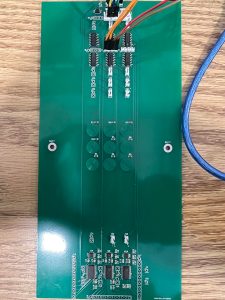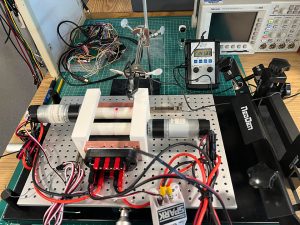Handheld MRI Rotational Spatial Encoding and Deep-Learning Priors
MS student Yaokun Shi with Advisor K.Haran
Funded by the Grainger CEME, the handheld MRI device utilizes a novel approach compared to other portable MRI devices by replacing the conventional C-shaped or solenoid magnet with two diametrically magnetized cylindrical magnets that are capable of individually rotating. This unique spatial encoding creates a non-homogeneous magnetic field in the imaging volume and thus compensates for the removal of the gradient coils, which contributes to the power and size cost of traditional MRI devices. As figure 1 shows, the current Tx and Rx coils are embedded in the custom PCB along with all the other control components, which then communicates with the microcontroller boards to send signal serially to the host PC.
The next step of the project involves precise measurements of the rotating magnetic field, which is demonstrated in figure 2. The coils will be tested using the Larmor frequencies generated by this magnetic field on phantoms filled with doped water using the PETRA sequence, which doesn’t require the gradient coils and produces an image with T1 contrast. Lastly, neural networks with deep learning priors are being developed to further enhance the image quality due to the low magnetic field of the handheld MRI device to produce intelligible images through cloud computing platforms.

